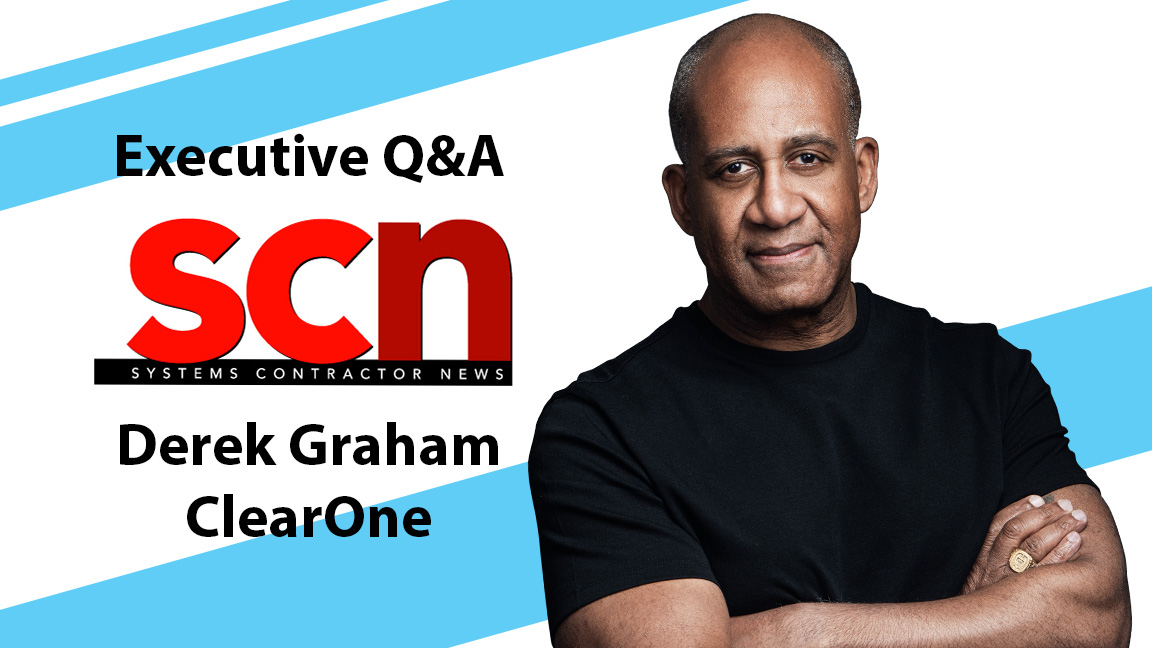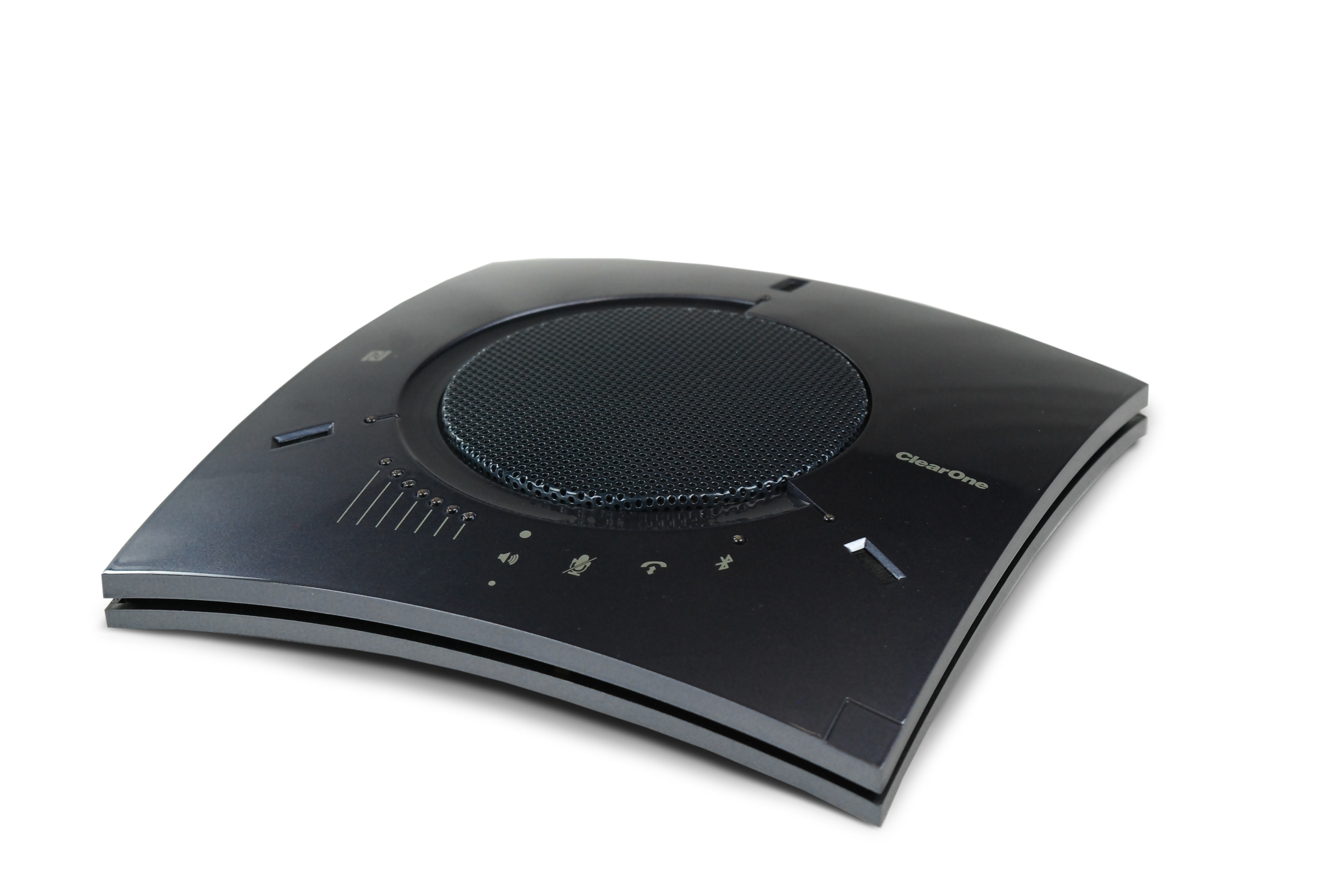Executive Q&A: Change of Plans
New ClearOne CEO Derek Graham is moving manufacturing and stressing certifications.

SCN: How long have you been with ClearOne, and what are your responsibilities?
Derek Graham: I started working for ClearOne in July 2003, so I have been with ClearOne for about 20 years. Currently, one of my responsibilities is setting the strategic direction for the company and making decisions that drive growth in revenue and profit. Another responsibility is balancing the competing needs of our employees, customers, and investors.

SCN: How has your engineering background, particularly with ClearOne, helped you prepare for your role as CEO?
DG: My engineering background taught me how to find the optimal solution for a problem with a given set of resources and constraints. My experiences prepared me by immersing me in projects that often had problems with several subcomponents and layers of complexity along with schedule deadlines and cost constraints.
My first role at ClearOne was lead engineer in a subsidiary called VideoLabs in Minnesota. Over time, I was given the opportunity to take on roles with greater levels of responsibility. My job title changed to engineering operations manager, director of R&D, senior director of R&D, vice president of R&D, and then senior vice president of R&D.
As my responsibilities grew, I was given the opportunity to work with and provide deliverables to all areas of the company. I also had the opportunity to establish relationships with key players within the company outside of R&D in operations, sales, and finance. In addition, I had the opportunity to contribute to the company’s patent portfolio as an inventor and play a key role in defending the company’s intellectual property.
ClearOne has a strong legacy as a pioneer in the conferencing and communication space. I am thankful that our board of directors saw that I had aptitude for greater responsibility and recognized my unique strength in continuing ClearOne’s legacy by giving me the opportunity to move into this role.
A daily selection of the top stories for AV integrators, resellers and consultants. Sign up below.
SCN: Now that you no longer have “interim” status, what are your short and long-term goals for ClearOne?
DG: In the short term, ClearOne is working to transfer our manufacturing from China to Singapore. There are several benefits we will gain from this transfer, including TAA compliance, which allows us to qualify for certain sales to the U.S. government and avoid China tariffs. The downside is that the transition places constraints on the volume of products we can produce until the transition is complete.
[Executive Q&A: Diamond Days for Verrex]
Longer term, I want to do a better job of addressing the concerns and needs of our channel partners and as our revenue grows, I would like to add more internal programs that benefit our employees. I have given the team a goal to increase the interoperability of our products with products from other companies. I want to obtain more Zoom certifications and add Microsoft Teams certifications for our products. I also want ClearOne to continue to innovate by using advancements in computing power to add new features, improve audio and video quality, integrate more functionality into fewer boxes, and leverage new technologies to make it easier to configure and deploy our products.
SCN: What area is drawing the most business for ClearOne these days, home office or commercial solutions?
DG: Commercial solutions are generating the most revenue for ClearOne these days. We experienced a significant sales increase in 2021 for our video cameras for home office use, as many people around the world started working from home due to COVID-19, but in 2022, video sales for home office use decreased.
SCN: How important is BYOD in today’s hybrid workforce and educational settings?
DG: BYOD is very important because these days, a significant percentage of people work from home for at least part of the work week. For those people, having the ability to use the same computing device in the office or classroom and at home can significantly improve productivity.
SCN: ClearOne has speakerphones, conference phones, and tabletop microphones. What’s the difference?

DG: Speakerphone is the name ClearOne uses for peripherals for a computer that have a built-in speaker and one or more microphones in a common housing. They allow a user with a laptop or mobile phone to connect to one or more speakerphone peripheral devices in a conferencing space. Speakerphones can generate louder audio output and capture audio from a larger area in a conferencing space than a single computing device. Speakerphones are typically connected to a computing device via USB or Bluetooth. Some companies have started calling these devices “SpeakerMics.”
Conference phone is the name ClearOne uses for a device that can operate as a standalone phone instead of working only as a peripheral to another device. Conference phones have a built-in speaker, one or more microphones, a keypad, and a display that can be used for dialing and showing the status of a call. They are connected to a POTS or VoIP telephone line. Conference phones may also be able to connect to another conference phone, and/or a laptop via USB or Bluetooth. A tabletop microphone is just a mic without a speaker.
SCN: What are the biggest stumbling blocks for potential customers looking to adopt AVoIP workflows?
DG: Many potential AVoIP customers want to use their existing IP networks and set up a VLAN to stream video, but they also want low video latency and high video resolution. These customers often find that they do not have sufficient bandwidth to support their desired AVoIP use cases. Also, even though video compression formats are standardized, there can be interoperability issues when customers try to integrate AVoIP streaming equipment from different vendors into the same installation.
SCN: Your company has established ClearOne University—why such an emphasis on education?
DG: Our professional audio products offer system integrators a lot of power and configurability. To make effective use of that power, industry practitioners need to understand all the features and the different ways our products can be configured. They also need a foundation in the principles of audio for conferencing and sound reinforcement. Armed with that knowledge, a practitioner can confidently commission a space and achieve a level of system performance that will delight their customers.
[Viewpoint: Running from Fears in Pro AV]
SCN: What’s next for the Pro AV industry?
DG: In the area of professional cameras and video technology, I expect to see broader deployment of multiple lenses and sensors in a single camera along with AI capabilities. For pro audio, I expect to see technology improvements that make it easier for industry practitioners to program and deploy professional audio equipment, integrate equipment from different vendors more seamlessly, and manage all the equipment in an enterprise from a single application.

Mark J. Pescatore, Ph.D., has been the content director of Systems Contractor News since 2021. During his career, he's hosted and programmed two ongoing regional industry trade shows (including Future B2B's AV/IT Summit), produced and hosted podcasts and webinars focused on the professional video marketplace, taught more than a dozen college communication courses, co-authored the book Working with HDV, and co-edited two editions of The Guide to Digital Television.
